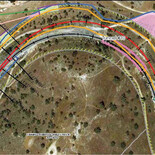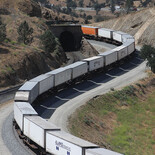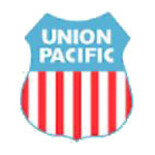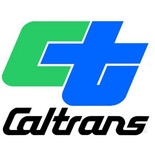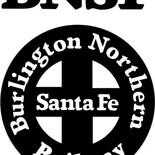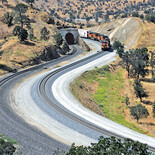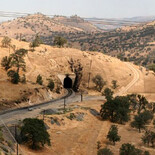Moving mountains to ease train traffic jams
The Forde Files No 148
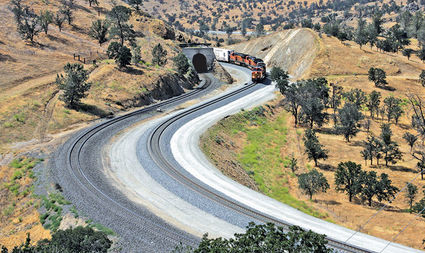
Tina Fisher Cunningham
Tunnel 10 east of the Tehachapi Loop as it looked since the original construction in 1876 until 2016, when BNSF, Union Pacific and Caltrans combined forces to make major improvements to the tracks from Bena, seven miles west of Caliente, to Marcel, 3.5 miles southwest of Keene. Left, the curve on June 8, 2017, with the new second track running outside the tunnel. Now two trains can navigate the route at the same time. The curve is known in the railroad community as Burton's corner, named after the dedicated railfan who bought property at the curve to enjoy the passing of the trains.
Major improvements to the train track that climbs up Tehachapi Canyon -- including double tracking and new sidings – are eliminating choke points and enabling longer trains to navigate the winding, steep route.
"The project alleviates bottlenecks and creates fluidity along the section," Sacramento-based Union Pacific spokesman Justin Jacobs told Forde Files.
Union Pacific owns the track, and BNSF (formerly Burlington Northern Santa Fe) has trackage rights. The improvements are a combined project of Union Pacific, BNSF and Caltrans. The track is one of the busiest freight routes in the United States, with an average of 35 trains crossing the Tehachapi summit every day. At full buildout in 2020, that number is expected to increase to 50 trains a day.
The BNSF/UPRR Mojave Subdivision Tehachapi Rail Improvement Project is being completed in sections.
Segments of the project, in railway lingo starting from the higher elevation (railroads named every spot the steam-driven trains had to stop for water), in priority order are:
Walong to Marcel, 1.01 miles;
The Cliff Siding Extension, 0.34 miles;
Rowen to Woodford, 1.55 miles;
Caliente to Bealville, 2.75 miles; and
Bena to Limon, 2.69 miles.
BNSF Director of Public Affairs Lena Kent said that all the work on the Tehachapi section of the project is complete.
"The total cost of the project was $34.4 million and included three miles of double track between Walong and Marcel. It also included an 8,500-foot rail siding at Cliff, which allows trains to pull to the side to allow another train to pass."
Construction on the section from Walong (near Caliente) to Marcel (near Keene), Jacobs said, began in May, 2015 and concluded in October, 2016.
In that section, engineers had to work around old tunnel 10, one of a dozen that Southern Pacific built in 1876 and have been in constant use for 151 years. Instead of trying to widen the tunnel to accommodate a second track, engineers left it intact and built around it.
The builders "extended a one-mile segment around the tunnel to connect the double tracks on either side of the tunnel," Jacobs said.
"More than 134,000 cubic yards of dirt were excavated. More than 5,000 feet of new rail and more than 10,200 tons of ballast [the rocks on the rail bed]."
The improvements have opened the way to increased capacity.
Double-tracking five of eight single-track segments, the environmental report said, would increase the length of trains the tracks could accommodate from 6,000 to 8,000 feet and produce an increase in commerce.
"The additional length of trains would result in an equivalent increase of up to 6,015 in additional containers..." the report said. "By double-tracking the entire 25 miles of track from Bena to Marcel, it is expected that 50 trains per day would pass through the Tehachapi route in 2020..."
The rail improvement project is the result of an abundance of trains.
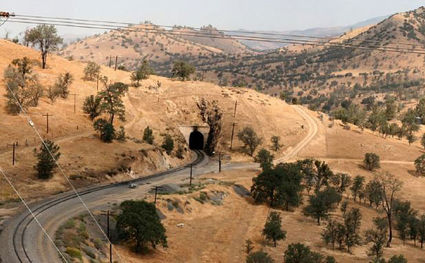
BNSF Railway/UPRR Mojave Subdivision Tehachapi Rail Improvement Project Draft Environmental Impact Report (EIR) 2012, by Caltrans.
Track from 1876 to 2016.
"Rail service throughout the Tehachapi Pass is experiencing a worsening congestion, a growing volume of rail traffic and increased delays," the 2012 EIR states. "Rail volumes through the Tehachapi Pass have greatly increased in the past decade due to growth in volume of goods transported through the region to destinations in the Midwest and South. In addition to rail transportation, the only major means of access across the Tehachapi Mountains between the Central Valley and eastern points such as Las Vegas and Phoenix is through State Route 58, a four-lane expressway with traffic controls in many segments. About 30 percent of the traffic on this portion of this expressway is truck traffic. Rapid growth in Bakersfield in recent years has also added traffic and congestion. This trend is expected to continue."
The project is designed to increase efficiency along the Tehachapi rail corridor and "reduce operational constraints that limit efficiencies of rail freight movement across the Tehachapi Mountains."
Total cost is $106.7 million in 2012 dollars.


